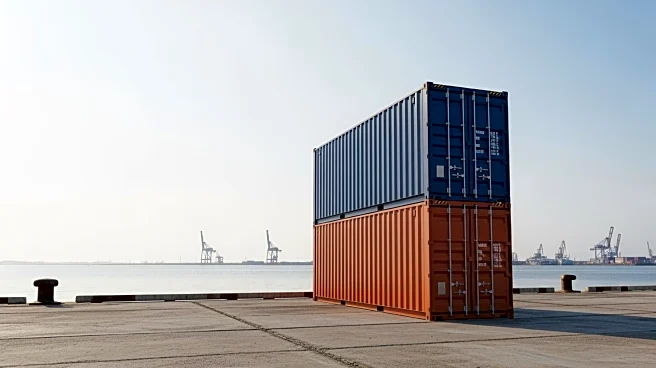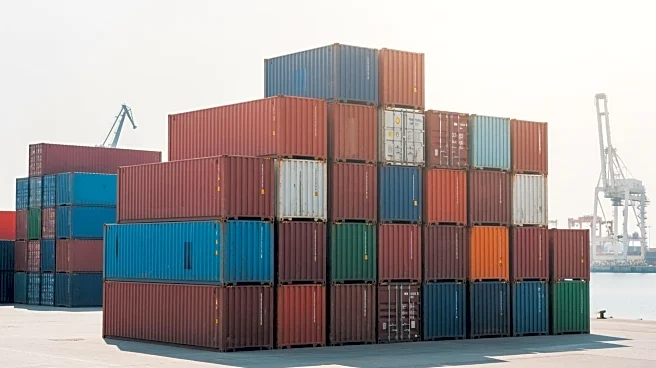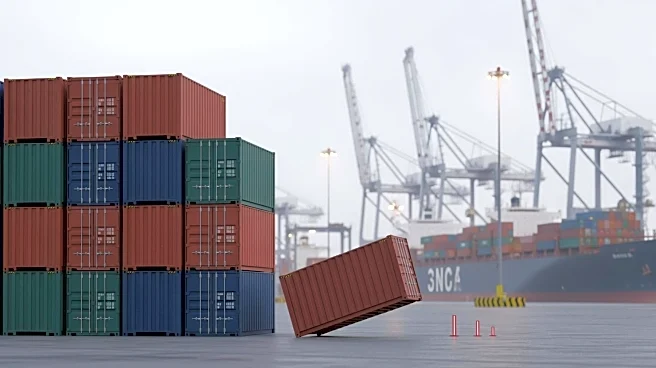What's Happening?
The Port of Los Angeles (POLA) and the Port of Long Beach (POLB) have reported a decline in cargo volumes for September. POLA's total volume fell by 7.5% annually to 883,053 Twenty-Foot Equivalent Units (TEU), while POLB's volume decreased by 3.9% to 797,537
TEU. The decline in imports and empty containers at POLA suggests a softening in demand, influenced by ongoing trade negotiations and tariffs. Despite the decline, POLA's third-quarter volume reached a record high, indicating fluctuating trade patterns. POLB's third-quarter volume was the second-highest in its history, although tariffs continue to impact consumer and business financial decisions.
Why It's Important?
The decline in cargo volumes at two of the largest U.S. ports highlights the impact of international trade negotiations and tariffs on the economy. The reduction in imports and empty containers suggests potential challenges for U.S. manufacturers and retailers relying on foreign goods. The ports' performance is a critical indicator of economic health, affecting supply chains and consumer prices. The ongoing trade tensions, particularly with China, could further influence port activities and economic stability, impacting businesses and consumers nationwide.
What's Next?
Looking ahead, POLA Executive Director Gene Seroka anticipates further declines in cargo volume due to ongoing trade negotiations with China, the U.S.'s largest trading partner. The ports will continue to adapt to changing trade policies and maintain communication with global supply chain partners. The potential for policy changes and tariff adjustments could alter import and export dynamics, affecting future port operations and economic conditions.














